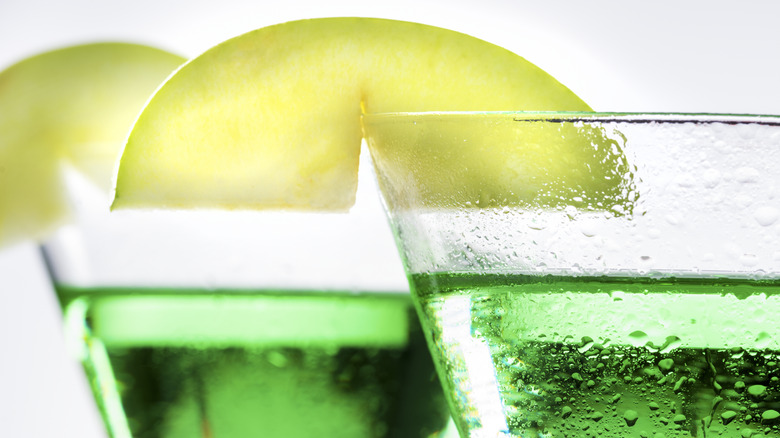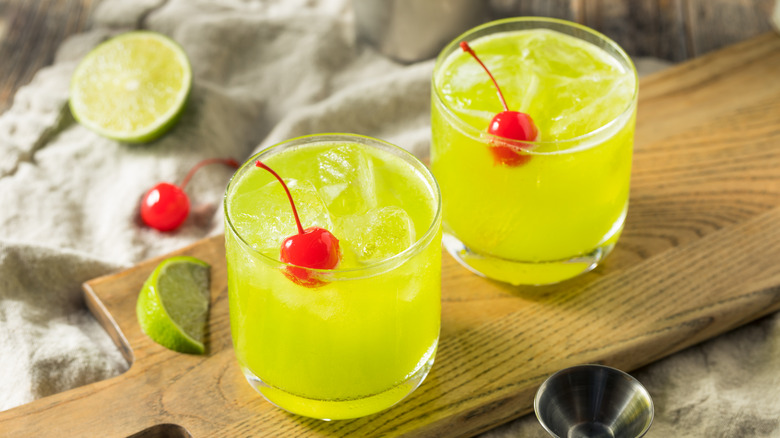How Japan's Midori Melon Liqueur Rose To Fame Globally
Shinjiro Torii's dream was to bring a colorful liqueur into the world, and in 1964, he did just that: the bright-green Hermes Melon Liqueur was launched into Japanese markets and began collecting curiosity and fans (via Midori). Bartenders and bar-goers alike were transfixed by the drink's unique taste and bright color. As Midori notes, the drink's melon flavor comes from rare Japanese muskmelons that are not only hard to procure but also expensive: these melons can cost as much as $20,000.
The name Midori can be translated to "green," and it was a fitting rebrand for the drink as it entered America's drinking scene. In 1978, bottles of the green liqueur arrived in the United States as one of the first fruity liqueurs to hit bar shelves. That same year, the drink was a key ingredient in the winning cocktail of the United States Bartenders' Guild competition (per Midori). But thanks to one particular American nightclub, the drink's popularity skyrocketed.
From nightclubs to home bars
New York City's Studio 54 was the place to be in the late 1970s, a lively nightclub where celebrities and stars frequently appeared as guests. When Studio 54 started serving Midori in 1978, it didn't take long for the stuff to be found in drinks served throughout the United States — and the world.
In addition to its recognizable hue, Midori's adaptability and functionality have contributed to its staying power, speculates EBS Bartending Academy. To this day, bartenders use the drink to add color to recipes or incorporate a balanced element into cocktails and shots. And while scoffed upon in some circles, CityMag challenges that this ingredient warrants a place in every bar.
Wondering what to make with the green liqueur? Steve the Bartender cites the Midori sour, Midori illusion, Japanese slipper, and Midori splice as the most popular drink recipes ordered with the bright ingredient.

